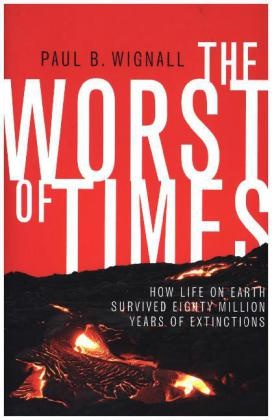Read more
Drawing on the latest discoveries as well as his own firsthand experiences conducting field expeditions to remote corners of the world, Paul Wignall reveals what scientists are only now beginning to understand about the most prolonged and calamitous period of environmental crisis in Earths history. He describes how a series of unprecedented extinction events swept across the planet in a span of eighty million years, rapidly killing marine and terrestrial life on a scale more devastating than the dinosaur extinctions that would come later. Wignall shows how these extinctions - some of which have only recently been discovered - all coincided with gigantic volcanic eruptions of basalt lavas that occurred when the worlds landmasses were united into a single vast expanse.
About the author
Paul B. Wignall is professor of paleoenvironments at the University of Leeds.
Summary
Unraveling the mystery of the catastrophic age of extinctions
Two hundred sixty million years ago, life on Earth suffered wave after wave of cataclysmic extinctions, with the worst wiping out nearly every species on the planet. The Worst of Times delves into the mystery behind these extinctions and sheds light on the fateful role the primeval supercontinent, known as Pangea, might have played in causing these global catastrophes. Drawing on the latest discoveries as well as his own firsthand experiences conducting field expeditions to remote corners of the world, Paul Wignall reveals what scientists are only now beginning to understand about the most prolonged and calamitous period of environmental crisis in Earth's history. Wignall shows how these series of unprecedented extinction events swept across the planet, killing life on a scale more devastating than the dinosaur extinctions that would follow. The Worst of Times unravels one of the great enigmas of ancient Earth and shows how this ushered in a new age of vibrant and more resilient life on our planet.
Additional text
"Over the 170-odd pages [Wignall] discusses in great yet concise detail the point and counterpoint of large igneous provinces, massiv accumulations of millions of cubic kilometers of igneous rock, and mass extinctions that occurred repetitively and in synchrony from the middle of the Permian to the middle of the Jurassic. . . . A well-researched, thorough, and stimulating volume for anyone looking for a scientific account of this time period and the notable geological and biological events that took place over its course."---William Gearty, Quarterly Review of Biology

